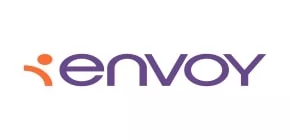Key Points
- On January 12, 2021, the DOL announced it will issue a Final Rule to increase and reform foreign worker prevailing wages on January 14, 2021
- The Final Rule increases minimum wages for H-1B, H-1B1, and E-3 foreign workers
- The Final Rule was implemented following the Interim Final Rule issued on October 8, 2020
- Changes affect PERM and LCA filings
- According to the DOL, the Final Rule is being issued to protect American workers and strengthen wage protections
- According to the DOL, the Final Rule removes the economic incentive for employers to hire foreign workers over U.S. workers
- U.S. employers must verify that they will pay H-1B, H-1B1, and E-3 workers the higher of at the least prevailing wage or the actual wage paid to similarly situated employees
- Additional litigation is expected
Overview
On January 12, 2021, the U.S. Department of Labor (DOL) announced that it will issue a Final Rule to increase and reform prevailing wages for foreign worker programs on January 14, 2021, to be implemented in 60 days.
What are the Changes?
The DOL will issue the Final Rule to reform the methodology it uses to establish prevailing wage rates and prevent potential abuse in its Permanent Employment Certification, H-1B, H-1B1, and E-3 foreign worker programs. The DOL is expected to phase in these increases.
Who is Affected?
The change applies to permanent (PERM) labor certifications and Labor Condition Applications (LCAs) in the DOL's H-1B, H-1B1, and E-3 foreign worker programs.
Background
On October 8, 2020, DOL issued an Interim Final Rule that was available for public comment. Following the public comment period, the agency determined that existing wage methodologies undermine the job opportunities and wages of American workers. Consequently, the DOL implemented the Final Rule to strengthen wage protections and protect American workers from employment instability caused by cheaper foreign labor. Per the DOL, Final Rule intends to remove the economic incentive for employers to hire foreign workers over American workers on both a temporary and permanent basis.
What Should Employers and Employees Know?
The DOL has adjusted wage levels based on its Interim Final Rule to reflect current market wages and ease the transition to new wage levels. Per the DOL, the new wage levels for the agency's foreign worker programs will more closely aligned with wages paid to similarly positioned U.S. workers.
When applying for H-1B, H -1B1, or H-3 visas for their foreign workers, U.S. employers must verify that they will pay nonimmigrant workers the higher rate of the prevailing wage or the wage level paid to comparable employees with similar qualifications and experience.
Looking Ahead
Additional litigation is expected. Envoy Global and Global Immigration Associates will provide updates as they become available.
Originally published 12 January 2021
The content of this article is intended to provide a general guide to the subject matter. Specialist advice should be sought about your specific circumstances.

